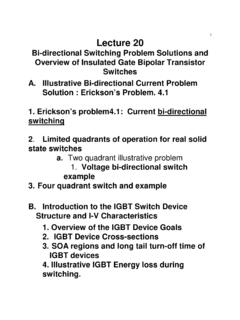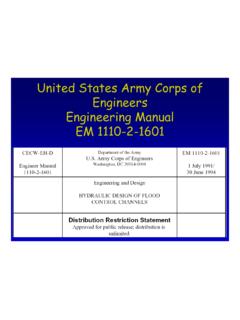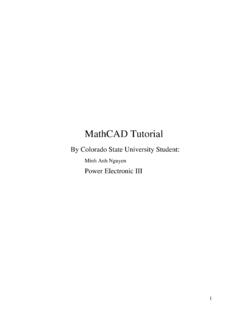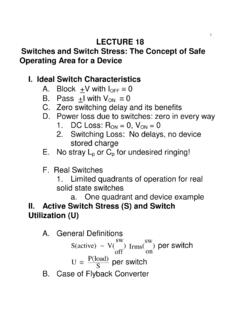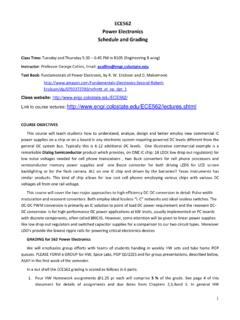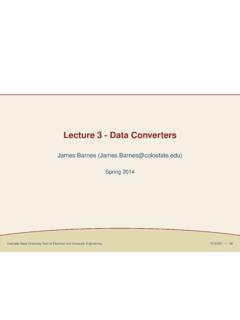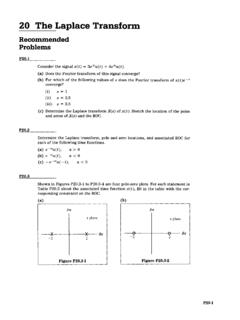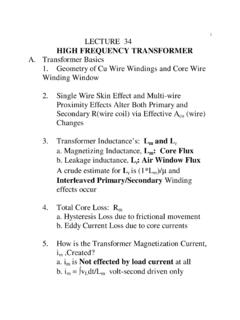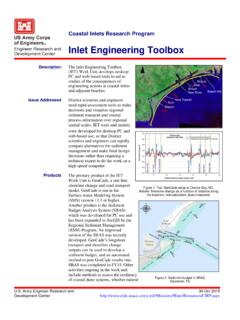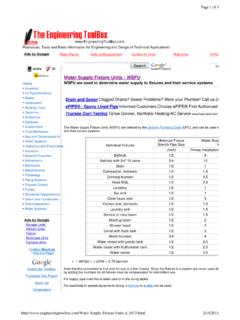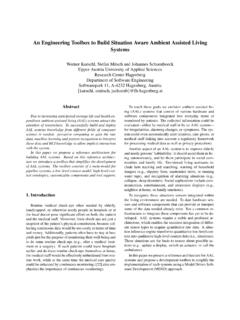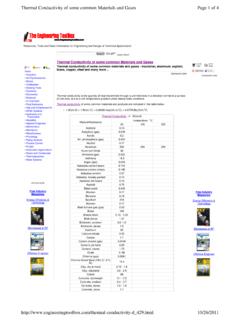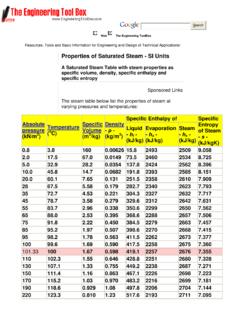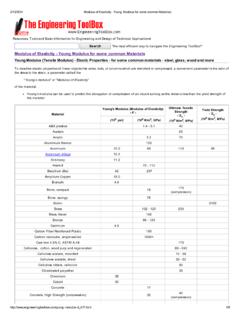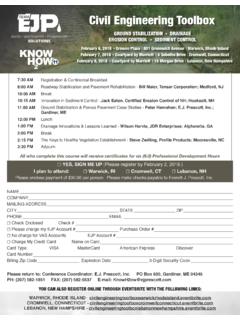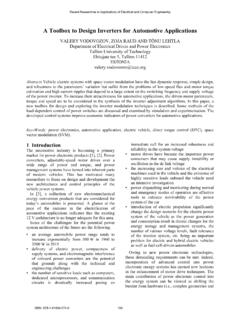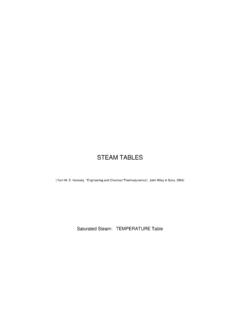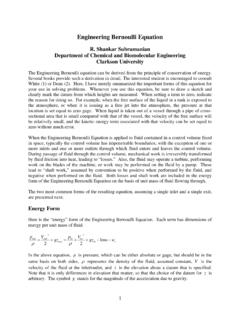Transcription of Types of Flowmeters - Walter Scott, Jr. College of Engineering
1 1 Types of Flowmeters Created By: Nick Alfino Matt Amidei Alwaleed Alomairah 2 Introduction Flow measurement is vital to many different industries such as oil, power, water and wa ste treatmen t. These industries require that they know exactly how much fluid is passing through a point at any given point. Flowmeters help to determine how much fluid is passing through to determine how much money should be billed or how much product is being produced.
2 A flowmeter is an instrument used to measure linear, non- linear, mass or volumetric flow rate of a liquid or gas. Most flow meters work by forcing flow through a known confined space and measuring different properties to determine the flow rate of fluid. Examples of measured properties include pressure, thermal, magnetic, etc. In the report below, we will provide example for five different Types of Flowmeters .
3 Most popular Flowmeters include: Coriollis, Differential Pressure, Magnetic, Positive Displacement and Variable area. The most common type of flowmeter is differential pressure and is pictured in Figure 3. The piezometers at the entrance and center measures the incoming pressure used to determine the velocity of the flow. Background and History: For thousands of years now, determining flow has been important to human culture and development.
4 In ancient times, the Egyptians used the flow of the Nile River to determine how well their harvest for the year was going to go. Knowledge of the direction and velocity of both air and water has helped ancient navigators and early communities in their development of aqueducts. The first major development in determining flow came from Swiss physicist Daniel Bernoulli in 1783. He determined that increasing the velocity of flowing fluid increases the kinetic energy while decreasing static energy.
5 Bernoulli was able to relate the permanent pressure loss as the velocity head. The next major development happened in 1831 by research form English scientist Michael Faraday. Faraday discovered that if a copper disk is rotated between the poles of a permanent magnet. Electromagnetic induction is the basis for operation of the magnetic flowmeter. If a liquid conductor move through a pipe of a know diameter through a magnetic Figure 3 Orifice Plate Figure 1: Daniel Bernoulli 3 field, the induced voltage produced can be used to determine the velocity of the liquid.
6 Prior to 1883, it was believed that the transition between laminar and turbulent flow was gradual. Thanks to mechanical engineer Osborne Reynolds and his discovery of a dimensionless parameter, it was known that the transition was abrupt. This was an important discovery because when the flow is turbulent, the pressure drop through a restriction is proportional to the square of the flowrate, while in laminar flow the relationship is linear.
7 More than a century after Christian Doppler discovered that if a sound source was approaching a receiver, the frequency appears to higher, the Doppler Flow meter came on the market. By using the shift in the reflected frequency is a function of the average traveling velocity, the flowrate can be determined. In 1970, aeronautical engineer Theodore von Karman with the assistance of the discovery of the Coriollis effect developed the Coriollis flow meter.
8 Karman discovered that while looking at stationary rocks in a river discovered that the vortices formed were constant and did not depend on how fast or slow the water was flowing. He noticed the same affect on wind blowing on a flag. This lead to the discovery of the Coriollis flowmeter by determining flow velocity with a sensor that counts the vortices passing through. New technologies and recent advances have increased the practicality and accuracy of all Types of flow meters.
9 Flowmeters are now able to switch their range between two different calibrated spans. These advances are expected to continue to evolve and advance Flowmeters in the near future. Types of Flowmeters : There are many different Types of flow meters and each performs optimally under different conditions. The most important part to choosing a flow meter is to have a clear understanding of the particular applications requirements.
10 Some good questions that can help determine the type of flow meter needed for different applications are; what type of fluid is being measured, what is the expected temperature of the fluid, what is the maximum pressure expected at the location, how accurate must the meter be, will the fluid flow be continuous or sporadic, what range of flows will the system be under, and what is the size of the pipe the meter will be installed on?
